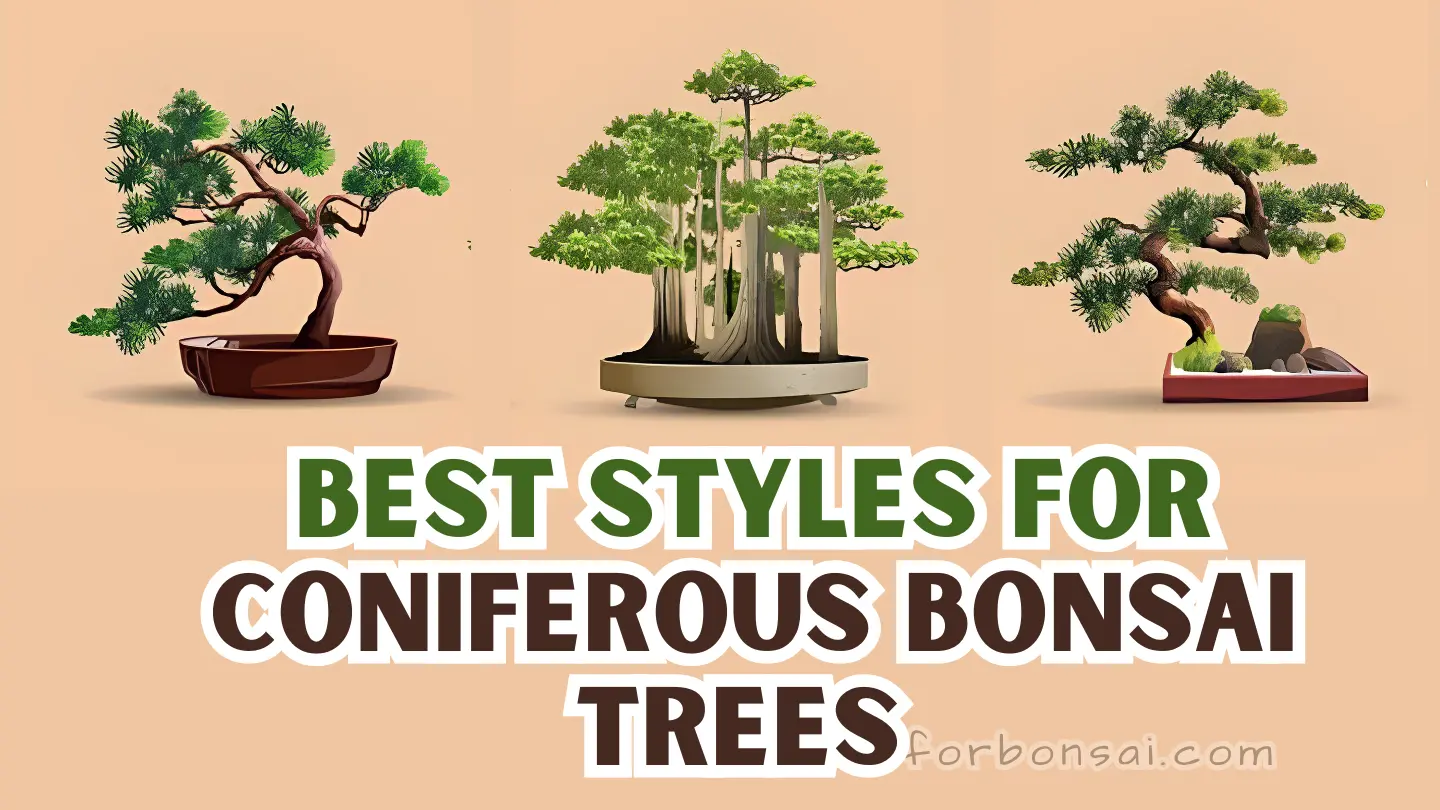Coniferous bonsai trees are mini marvels. Their elegance and tranquility in a small space is magical. With myriad bonsai styles to choose from, selecting the right one to enhance your coniferous bonsai’s beauty can be challenging, yet fun.
This guide explores suitable styles to unlock your tree’s potential and transform it into a living masterpiece. Let’s embark on an artistic adventure to find the best styles for your coniferous bonsai tree.
Styling Options for Coniferous Bonsai:
When it comes to cultivating and caring for coniferous bonsai trees, one of the most captivating aspects is the ability to shape them in various styles. These miniature marvels offer endless opportunities for artistic expression. In this section, we’ll delve into different styling options for coniferous bonsai, each with its unique charm.
| Style | Coniferous Perspective | Natural Suitability | Best Suited For |
|---|---|---|---|
| Formal Upright (Chokkan) | Achievable, slightly rigid | Many conifers with upward growth | Trees with inherently straight growth |
| Informal Upright (Moyogi) | Favorite, retains identity | Trees with some natural bends | Junipers, younger Pines |
| Slanting (Shakan) | Achievable with balance | Trees leaning due to light/wind | Species with flexible trunks |
| Cascade (Kengai) | Challenging, not very natural | Rarely seen in wild conifers | Flexible varieties with patience |
| Semi-Cascade (Han-Kengai) | More natural than full cascade | Edge-growers (cliffs, riverbanks) | Various conifers for a forest look |
| Windswept (Fukinagashi) | Captures mountain essence | Trees in windy areas | Most conifers with training |
| Group Planting (Ikadabuki) | Feels like a forest family | Multiple trees together | More natural than a full cascade |
1. Formal Upright Style
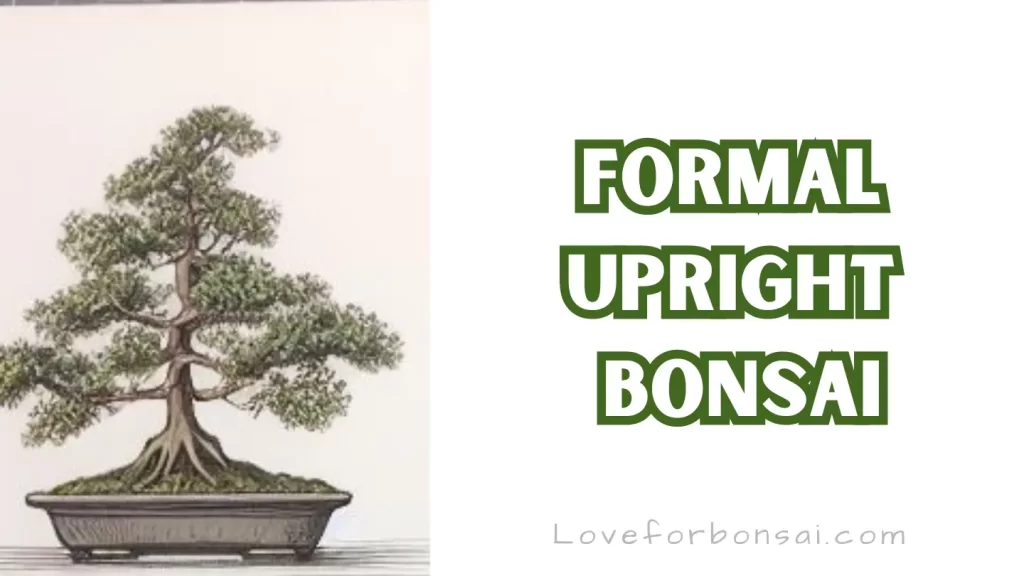
The formal upright style is a classic choice for coniferous bonsai. In this style, the tree grows straight upward with a well-defined, tapered trunk.
The branches are meticulously pruned to maintain a balanced, pyramid-like structure. This style exudes an air of strength and maturity, making it a timeless favorite among bonsai enthusiasts.
2. Informal Upright Style
The informal upright style embraces the imperfections of nature. Coniferous bonsai trees in this style have trunks that slightly curve and exhibit a more natural, organic form.
This style is perfect for those who appreciate the beauty of imperfection and want to capture the essence of a tree’s wild growth in their bonsai.
3. Cascade Style
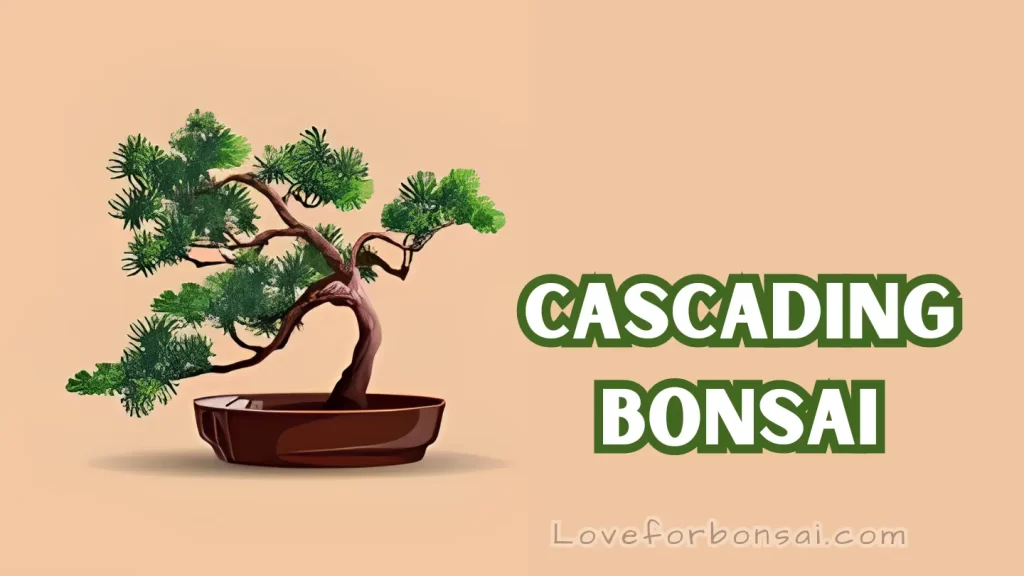
The cascade style, also known as “kengai,” is a dramatic choice for coniferous bonsai. In this style, the tree appears as if it’s clinging to the side of a cliff, with its trunk cascading downward.
It’s a striking and captivating choice, representing the resilience of trees growing in challenging environments.
4. Semi-Cascade Style
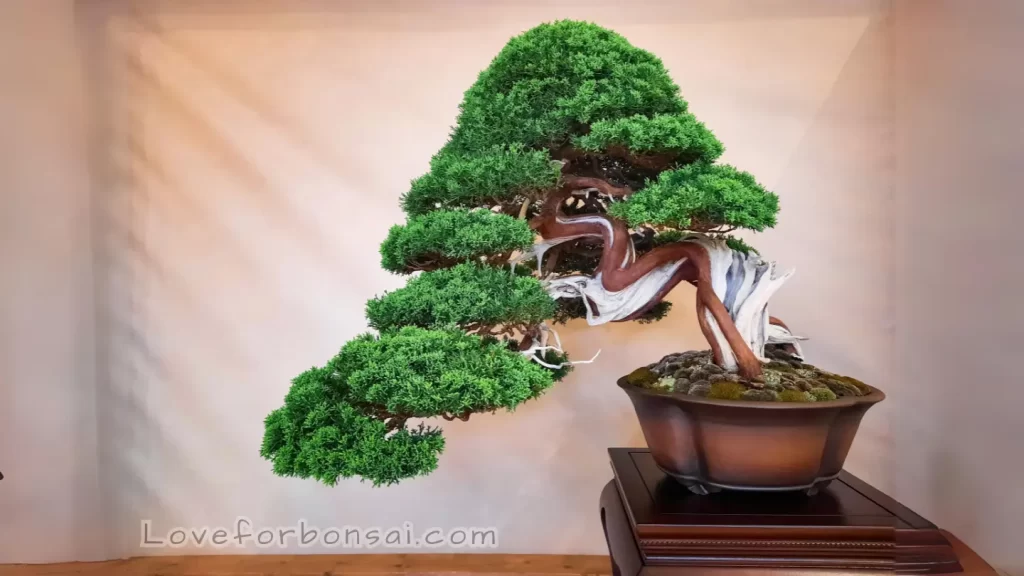
The semi-cascade style offers a compromise between the formal upright and cascade styles. The trunk of the coniferous bonsai curves, but not as dramatically as in the cascade style. This style conveys a sense of balance and harmony, making it visually appealing and less demanding in terms of maintenance.
5. Windswept Style
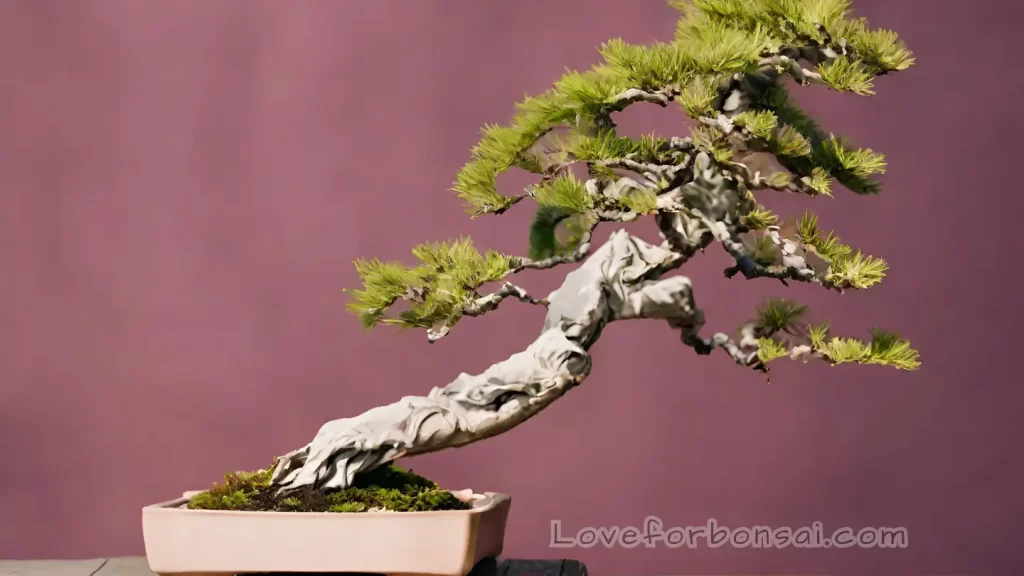
The windswept style, also known as “fukinagashi,” mimics the effects of strong winds on a tree’s growth. The branches of the coniferous bonsai are styled to appear as if they’ve been permanently bent by relentless winds. This style conveys a sense of struggle and survival, making it a powerful choice for artistic expression.
6. Broom Style
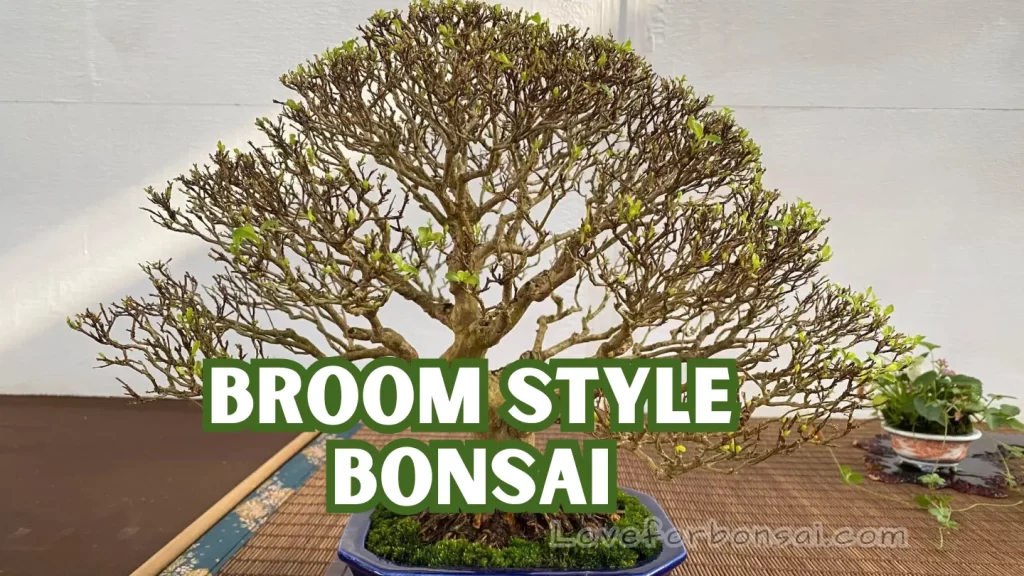
The broom style is characterized by a straight, upright trunk and branches that radiate outwards in a symmetrical pattern, resembling a broom. This style exudes a sense of order and precision, making it an excellent choice for coniferous bonsai that require a more formal appearance.
7. Literati Style
The literati style, also known as “bunjin,” is a style that encourages creativity and individuality. It often features twisted trunks and branches, with a sense of movement and asymmetry. Coniferous bonsai in the literati style reflects the essence of unique, artistic expression.
8. Group Planting Style
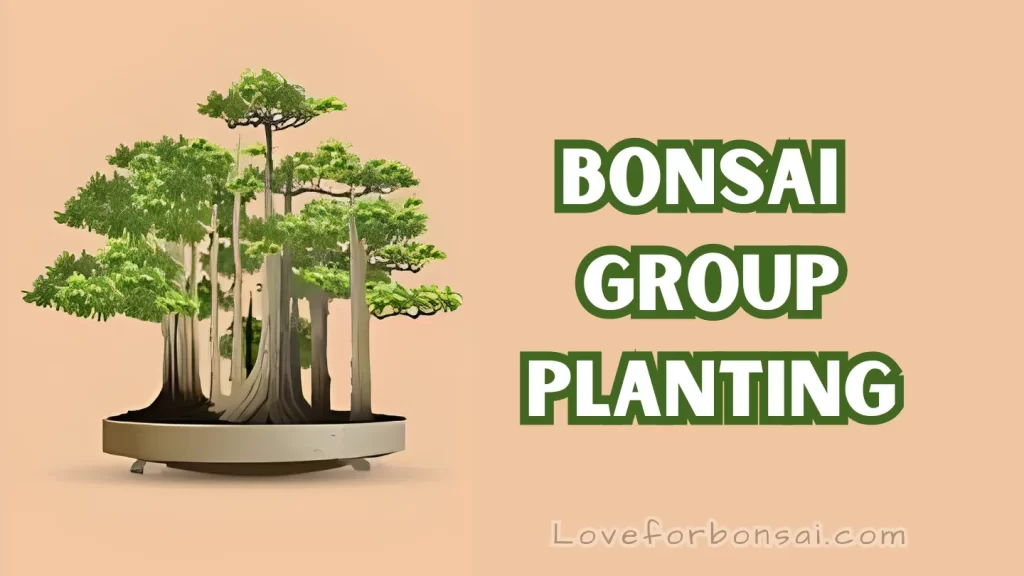
Group planting, or “yose-ue,” involves multiple coniferous bonsai trees planted together in a single pot.
This style allows for the creation of miniature forests or groves, with each tree contributing to the overall composition. It’s a harmonious and visually appealing style that mimics the beauty of nature.
9. Multi-Trunk Style
The multi-trunk style, as the name suggests, features multiple trunks emerging from the same root base. Each trunk can have its own style, creating a dynamic and visually engaging composition. This style showcases the interconnectedness of trees in a natural forest setting.
10. Driftwood Style
The driftwood style is a unique and artistic approach to coniferous bonsai. It involves the use of driftwood or deadwood to create a sense of age and character. The living foliage is often concentrated on a small section of the tree, emphasizing the stark contrast between life and the passage of time.
Symbolism and Meaning of Bonsai Trees: What Do They Represent?
Final Words:
Alright, so here’s the bottom line: we’ve been on this cool journey to figure out the best styles for coniferous bonsai trees. These little trees have their own unique charm, and we’ve found the styles that bring out their beauty.
Remember how we started by geeking out over those elegant coniferous bonsai trees? Well, now you’ve got the inside scoop on how to make them even more amazing.
Now, it’s your turn to get creative. Which style speaks to you the most, and how are you going to use it to jazz up your coniferous bonsai? Share your thoughts and bonsai stories with us!
We’re not done yet, folks. Keep an eye out for more bonsai adventures. We’ll dive into advanced techniques, care tips, and stories from fellow bonsai fans to keep the inspiration flowing.
As you head off from this article, take your newfound bonsai wisdom and run with it. Experiment, learn, and make your coniferous bonsai a work of art one day at a time.
Thanks for tagging along on this bonsai journey.
